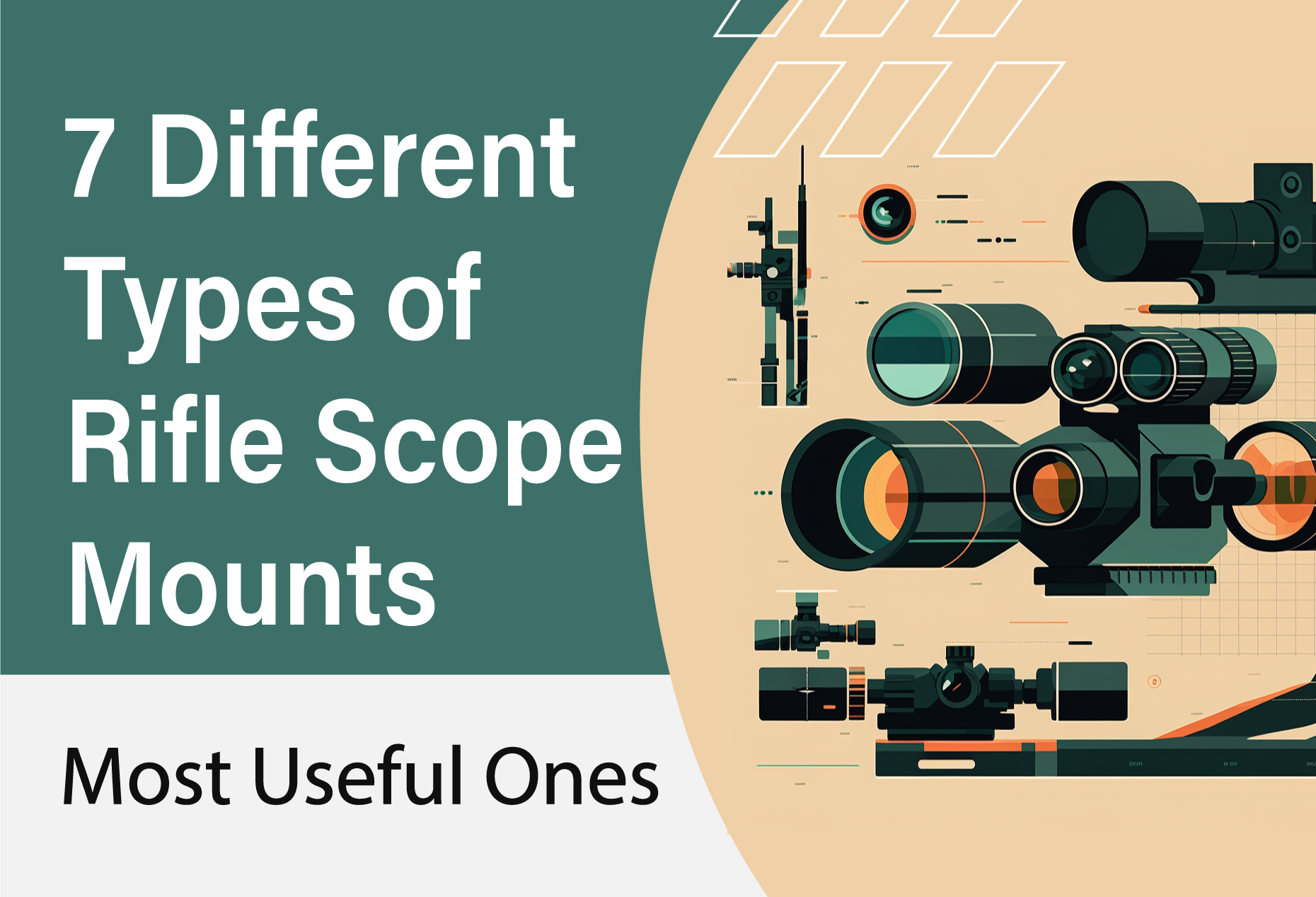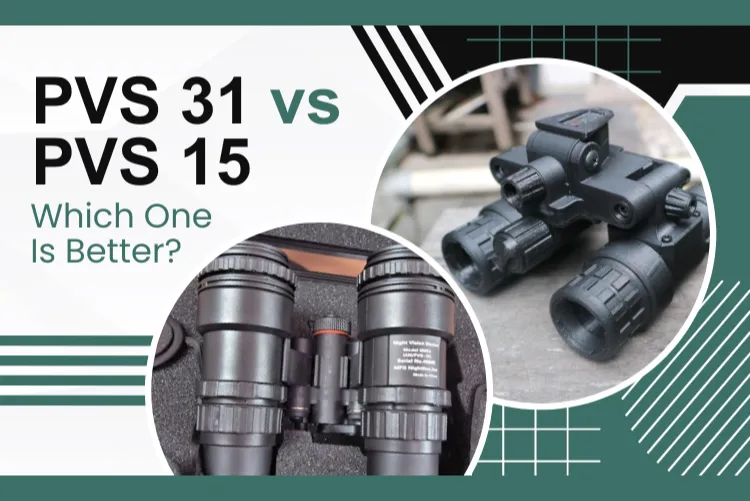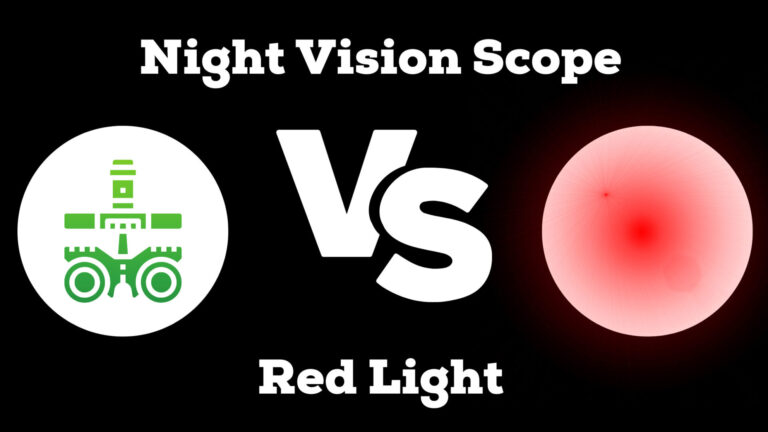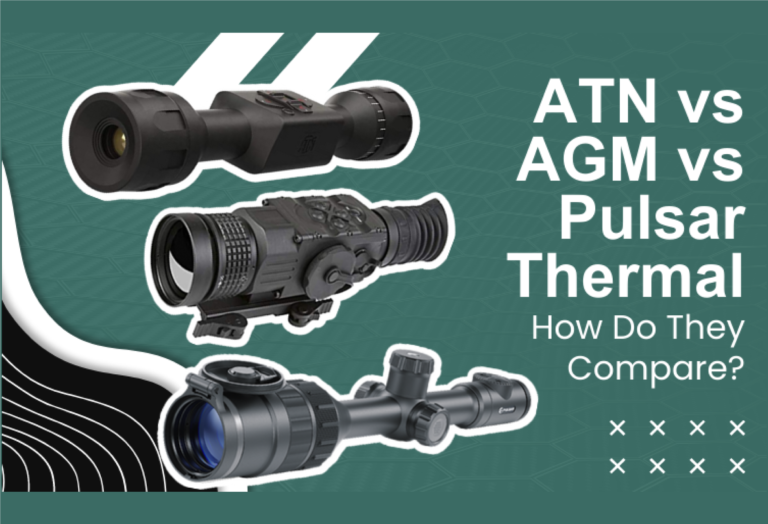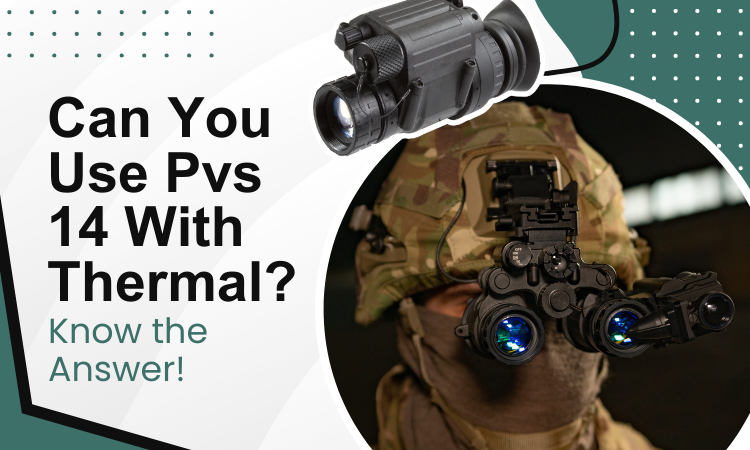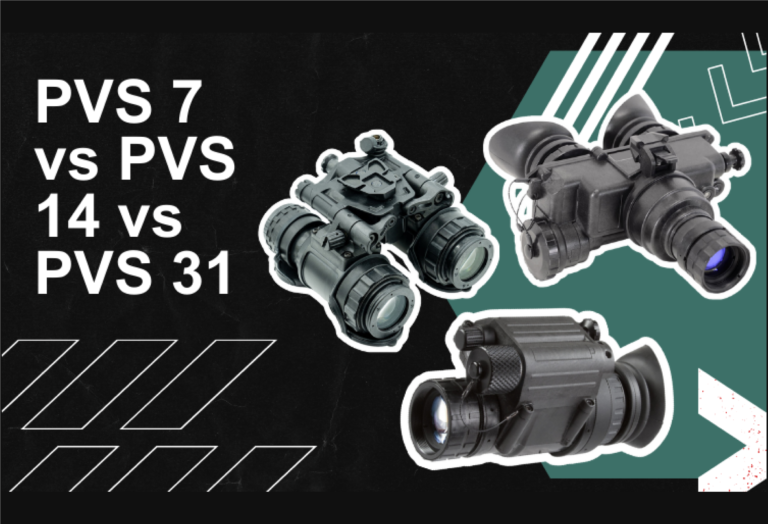Staying on Target: A Comprehensive Guide to Understanding the Different Types of Rifle Scope Mounts
They come in all shapes and sizes, as well as different materials. The type of scope mount you choose will depend on your specific needs, preferences, and the type of rifle you are using.
7 Different Types of Rifle Scope Mounts (Most Useful Ones)
1- Fixed Scope Mounts
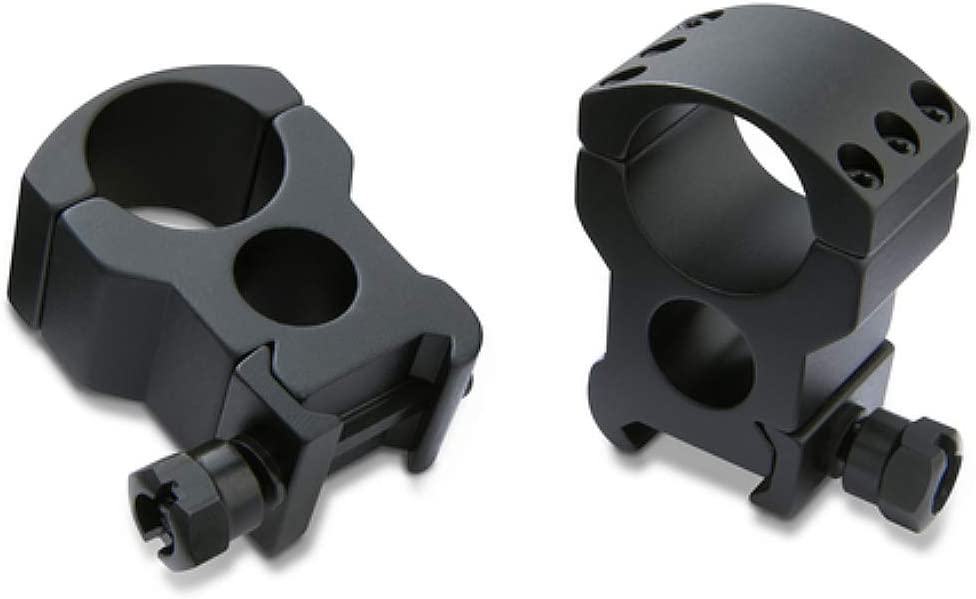
Fixed scope mounts are the simplest and most common type of scope mounts, and they consist of two separate rings that are mounted directly to the rifle’s receiver or the base of the gun. These mounts are typically made from lightweight and durable materials, such as aluminum, steel, or titanium, and they come in a variety of sizes and configurations to fit different types of rifles and scopes.
The key specifications for fixed-scope mounts include the following:
- Ring Diameter: Fixed scope mounts come in different ring diameters, which are designed to fit different sizes of rifle scopes. The most common ring diameters are 1 inch and 30mm, although other sizes are also available.
- Ring Height: The height of the scope rings determines how high the scope sits above the rifle’s receiver or base. Choosing the right ring height is important to ensure proper alignment between the scope and the shooter’s eye. The height of the rings can range from low to high, depending on the rifle and the shooter’s preference.
- Mounting System: Fixed scope mounts can be attached to the rifle’s receiver or base using different mounting systems, such as screws, bolts, or clamps. Some mounts also feature recoil lugs or other mechanisms to help keep the scope stable and prevent it from shifting during recoil.
- Material: Fixed scope mounts can be made from different materials, such as aluminum, steel, or titanium. Each material has its own advantages and disadvantages in terms of weight, durability, and cost.
- Finish: Fixed scope mounts can come in different finishes, such as matte, gloss, or camo. The finish can affect the mount’s appearance and its durability and resistance to wear and tear.
When choosing a fixed scope mount, it is important to consider the specific needs of your rifle and scope and your personal preferences and shooting style. A well-chosen fixed scope mount can provide a solid and stable platform for your scope, helping you to achieve accurate and consistent shots.
Here are a few examples of fixed scope mounts that are popular and well-regarded among shooters:
- Burris Optics Tactical Rings: These scope rings come in a variety of ring diameters and heights, and they are made from high-quality aluminum with a matte finish. They feature six screws per ring for maximum stability, and they are designed to withstand heavy recoil and harsh conditions.
- Leupold Mark 4 Rings: Leupold is a well-known and respected brand in the optics industry, and their Mark 4 rings are a popular choice among shooters. These rings are made from aircraft-grade aluminum, and they come in a variety of sizes and heights to fit different rifles and scopes.
- Vortex Optics Tactical Rings: Vortex is another popular brand in the optics industry, and its tactical rings are a good choice for shooters who want a sturdy and reliable mount for their scope. These rings are made from aircraft-grade aluminum and come in various sizes and heights to fit different rifles and scopes.
- Warne 1 Inch Tikka Fixed Scope Mount: If you have a Tikka rifle, these fixed scope mounts from Warne are a great option. They are made from lightweight aluminum and feature a durable matte finish. They are designed to fit Tikka rifles with a 1-inch scope tube and come in different heights to accommodate different scope sizes.
- DNZ Products Game Reaper Scope Mount: These scope mounts from DNZ Products are a good choice for hunters who want a lightweight and sturdy mount for their rifle scope. They are made from high-quality aluminum and feature a one-piece design for maximum stability. They come in various sizes and heights to fit different rifles and scopes.
These are just a few examples of fixed-scope mounts that are popular and well-regarded among shooters. When choosing a scope mount, be sure to consider the specific needs of your rifle and scope, as well as your personal preferences and shooting style.
2- Detachable Scope Mounts
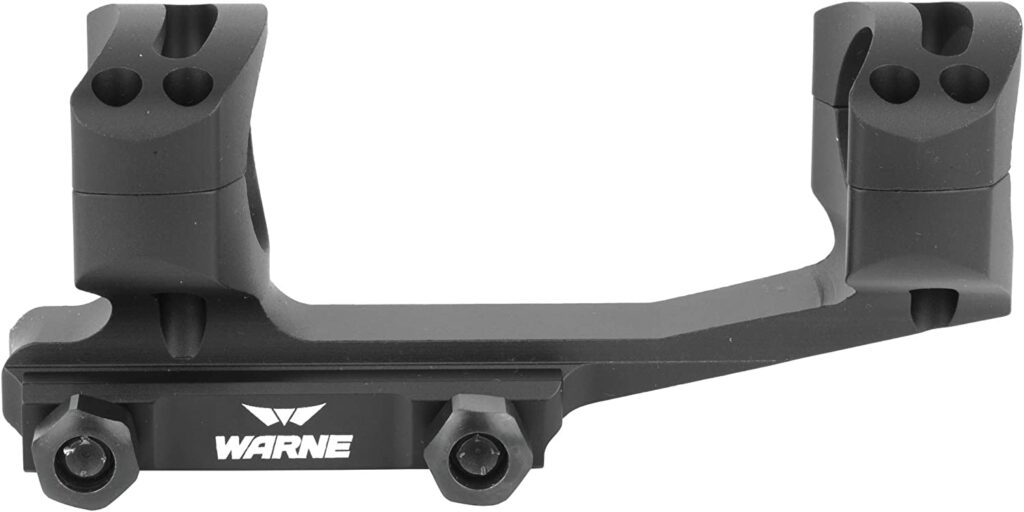
Detachable scope mounts, also known as quick-detach (QD) mounts, are popular among shooters who want the flexibility to remove their scope from their rifles quickly and easily. These mounts typically consist of two separate parts: a base that is permanently attached to the rifle and rings or a mount that can be easily detached from the base.
The key specifications for detachable scope mounts include:
- Base Type: The base of a detachable scope mount can be attached to the rifle in different ways, such as with screws, clamps, or dovetail mounts. Choosing a base compatible with your rifle and providing a secure and stable attachment point for the scope rings is important.
- Ring Type: The rings or mounts that attach to the base can come in different types, such as lever-release, screw-release, or twist-release. Lever-release mounts are the most popular because they allow for quick and easy removal of the scope without needing tools.
- Ring Diameter: Detachable scope mounts come in different ring diameters to fit different sizes of rifle scopes. The most common ring diameters are 1 inch and 30mm, although there are other sizes available as well.
- Ring Height: The height of the scope rings determines how high the scope sits above the rifle’s receiver or base. It is important to choose the right ring height to ensure proper alignment between the scope and the shooter’s eye. The height of the rings can range from low to high, depending on the rifle and the shooter’s preference.
- Material: Detachable scope mounts can be made from different materials, such as aluminum, steel, or titanium. Each material has its own advantages and disadvantages in terms of weight, durability, and cost.
- Finish: Detachable scope mounts can come in different finishes, such as matte, gloss, or camo. The finish can affect the appearance of the mount as well as its durability and resistance to wear and tear.
When choosing a detachable scope mount, it is important to consider the specific needs of your rifle and scope, as well as your personal preferences and shooting style. A well-chosen detachable scope mount can provide the flexibility to easily switch between different scopes or to remove the scope for cleaning or storage.
There are many different fixed-scope mounts available on the market, and the best one for you will depend on your specific needs, preferences, and budget.
Here are a few examples of detachable scope mounts that are popular and well-regarded among shooters:
- Warne Scope Mounts Gen 2 Extended Skeletonized MSR Mount: This mount from Warne is a popular choice for AR-15 owners who want a sturdy and reliable quick-detach mount for their scope. It features a lever-release design that allows for quick and easy removal of the scope, and it is made from lightweight aluminum with a skeletonized design for maximum strength and rigidity.
- Vortex Optics Precision QR Extended Cantilever Mount: This mount from Vortex is a good choice for shooters who want a quick-detach mount that provides high precision and accuracy. It features a lever-release design that allows for easy removal of the scope and a cantilever design that provides extra space for mounting accessories like red dot sights or night vision devices.
- Leupold QR Tikka T3 and Tikka Master Mount: This mount from Leupold is designed specifically for Tikka T3 and T3X rifles, and it features a lever-release design that allows for quick and easy removal of the scope. It is made from lightweight aluminum and has a low profile that keeps the scope close to the receiver for maximum accuracy.
- Burris Optics Xtreme Tactical XTR II Riflescope Mount: This mount from Burris Optics is a good choice for shooters who want a durable and reliable quick-detach mount for their scope. It features a lever-release design that allows for quick and easy removal of the scope, and it is made from high-quality aluminum with a matte finish for maximum durability.
- American Defense Manufacturing AD-RECON-SL 30 MOA Scope Mount: This mount from American Defense Manufacturing is a good choice for shooters who want a quick-detach mount that provides a high level of precision and accuracy. It features a screw-release design that allows for easy removal of the scope, and it has a 30 MOA cantilever design that provides extra elevation for long-range shooting.
These are just a few examples of detachable scope mounts that are popular and well-regarded among shooters. When choosing a scope mount, be sure to consider the specific needs of your rifle and scope, as well as your personal preferences and shooting style.
3 – Weaver and Picatinny Rails
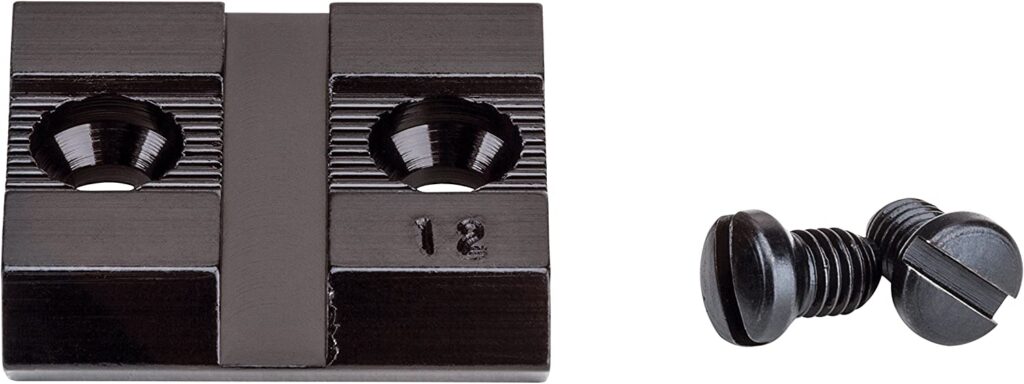
Weaver and Picatinny rails are two of the most popular types of rifle scope mounts. These rails are designed to provide a stable and secure attachment point for rifle scopes, red dot sights, and other optics. Here are some detailed specifications for both types of rails:
- Weaver Rail Specifications:
- Size: The Weaver rail is a two-piece mount with a base that measures 3/4 inch wide and has a dovetail design. The cross slots on the mount are 0.180 inches wide and spaced 0.505 inches apart.
- Material: Weaver rails are typically made from aluminum or steel and are known for their durability and strength.
- Compatibility: Weaver rails are compatible with most rifles, although some rifles may require an adapter to attach the mount.
- Scope Rings: Weaver rails are typically used with Weaver-style scope rings, which are secured to the rail with screws.
- Picatinny Rail Specifications:
- Size: The Picatinny rail, also known as a MIL-STD-1913 rail, has a similar design to the Weaver rail but with more standardization in its spacing and size. The base of the rail measures 1 inch wide and has a series of evenly spaced cross slots that are 0.206 inches wide and spaced 0.394 inches apart.
- Material: Picatinny rails are typically made from aluminum, steel, or other high-strength alloys.
- Compatibility: Picatinny rails are designed to be compatible with a wide variety of firearms and accessories, and many firearms are built with Picatinny rails or have the option to add one via a modification.
- Scope Rings: Picatinny rails are typically used with Picatinny-style scope rings, which have a wider clamping area and are often considered more secure than Weaver-style rings.
Both Weaver and Picatinny rails are designed to be compatible with a wide variety of firearms and optics, and both types of rails provide a stable and secure mounting platform. Ultimately, the choice between a Weaver or Picatinny rail will come down to personal preference and the specific needs of the shooter. However, the Picatinny rail has become the more standard design across many firearms, accessories and attachments.
4 – Dovetail Scope Mounts
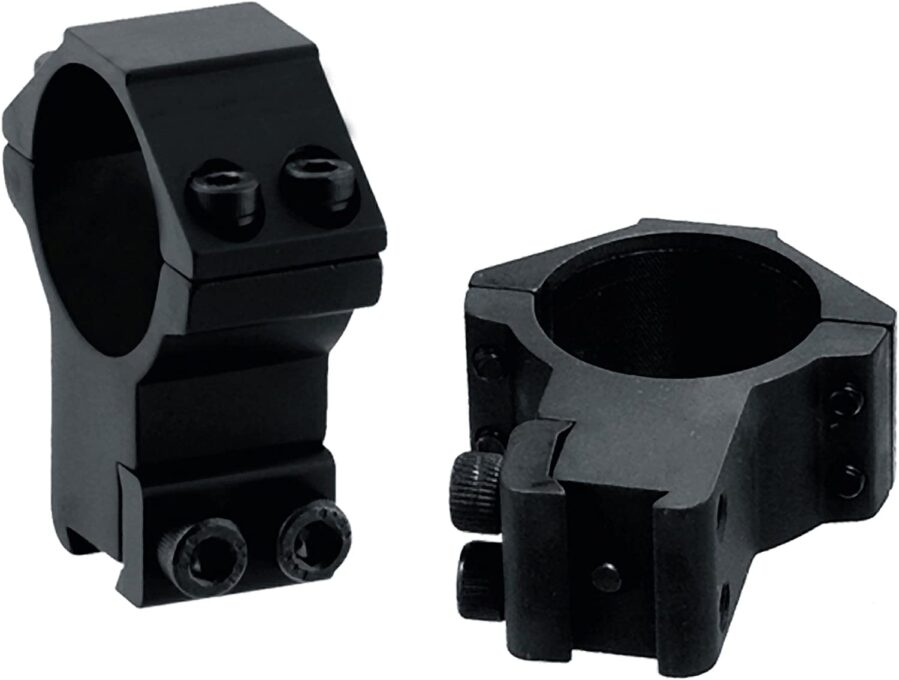
Dovetail scope mounts are a type of rifle scope mount that feature a unique dovetail-shaped groove that allows the mount to slide onto the rifle’s receiver. Here are some detailed specifications for dovetail scope mounts:
- Size: Dovetail scope mounts come in various sizes, with the most common sizes being 11mm and 3/8 inch. It is important to choose a mount that matches the dovetail groove size on your rifle.
- Material: Dovetail scope mounts are typically made from aluminum, steel, or other high-strength alloys. Some mounts may feature a lightweight polymer construction.
- Compatibility: Dovetail scope mounts are designed to be compatible with a wide variety of rifles, although some rifles may require an adapter to attach the mount.
- Scope Rings: Dovetail scope mounts typically require the use of dovetail-style scope rings, which are secured to the mount with screws or clamps.
- Design: Dovetail scope mounts may feature a one-piece or two-piece design. A one-piece mount is typically stronger and more stable, while a two-piece mount allows for easier access to the rifle’s receiver.
- Installation: Dovetail scope mounts are relatively easy to install, requiring only a few screws or clamps to secure the mount to the rifle’s receiver. However, it is important to ensure that the mount is properly aligned and tightened to prevent any movement or shifting during use.
Dovetail scope mounts are a reliable and affordable option for mounting a rifle scope or other optic to your rifle. When choosing a dovetail mount, be sure to consider the specific needs of your firearm and optics, as well as your personal preferences and shooting style.
5 – Integral Scope Mounts
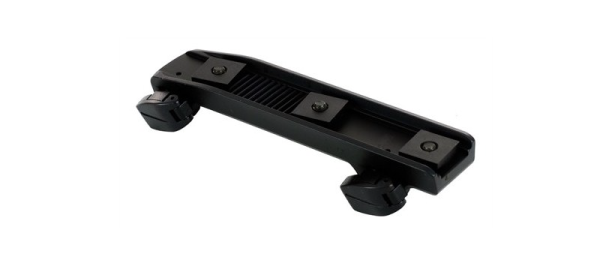
Integral scope mounts, also known as integral scope bases, are a type of rifle scope mount that is machined directly into the receiver of the firearm. Here are some detailed specifications for integral scope mounts:
- Machining: Integral scope mounts are machined directly into the receiver of the rifle, which means that they provide a secure and stable base for the scope without the need for separate mounting hardware. The machining process is typically done with high-precision CNC equipment to ensure a tight and precise fit.
- Material: Integral scope mounts are usually made from the same material as the rifle’s receiver, which is often steel or aluminum. This ensures a seamless and durable connection between the scope and the firearm.
- Design: Integral scope mounts can come in a variety of designs, including full-length rails or individual bases for each scope ring. The design will depend on the specific rifle and the intended use of the firearm.
- Compatibility: Integral scope mounts are designed specifically for the rifle they are machined into, so it is important to ensure that the mount is compatible with the particular make and model of the firearm.
- Scope Rings: Integral scope mounts may require specific scope rings that are designed to fit the unique contours of the mount. It is important to choose rings that are compatible with the mount and the scope being used.
- Installation: Installing an integral scope mount requires professional gunsmithing to machine the mount directly into the receiver of the firearm. This process can be time-consuming and costly, but it ensures a secure and stable connection between the scope and the rifle.
Integral scope mounts are a highly specialized type of scope mount that offers a high degree of stability and reliability. However, they are also relatively rare and may only be available for certain makes and models of rifles.
6 – Offset Scope Mounts
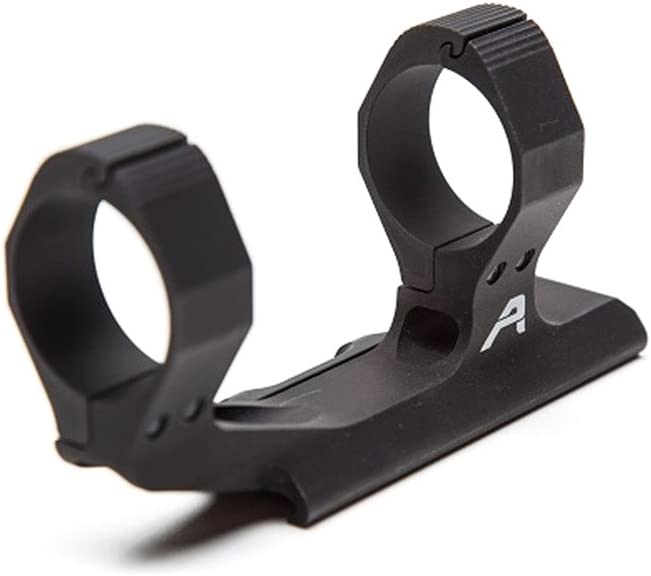
Offset scope mounts, also known as canted scope mounts or angled scope mounts, are a type of rifle scope mount that are designed to tilt the scope to the side of the receiver. Here are some detailed specifications for offset scope mounts:
- Tilt Angle: Offset scope mounts are available in different tilt angles, typically ranging from 10 to 45 degrees. The tilt angle is important because it affects the shooter’s ability to use the iron sights or backup optics.
- Material: Offset scope mounts are typically made from aluminum, steel or a combination of both. These materials are chosen because they are strong and durable, and can withstand the recoil forces of the rifle.
- Design: Offset scope mounts can come in a variety of designs, including single-piece mounts or two-piece mounts. The design will depend on the specific rifle and the intended use of the firearm.
- Compatibility: Offset scope mounts are designed to fit onto a Picatinny or Weaver rail, so it is important to ensure that the mount is compatible with the particular make and model of the firearm.
- Scope Rings: Offset scope mounts may require specific scope rings that are designed to fit the unique contours of the mount. It is important to choose rings that are compatible with the mount and the scope being used.
- Installation: Installing an offset scope mount is relatively simple and can be done by the shooter themselves. However, it is important to ensure that the mount is properly aligned and tightened to prevent any issues with accuracy.
Offset scope mounts are ideal for shooting at long distances, as they allow the shooter to compensate for bullet drop without having to adjust the scope’s elevation. They are also useful for shooting around obstacles, as they allow the shooter to maintain a low profile while still maintaining a clear sight picture. However, they may not be suitable for every type of rifle or shooting situation, so it is important to consider your specific needs and preferences when choosing a mount.
7 – QD (Quick Detach) Scope Mounts
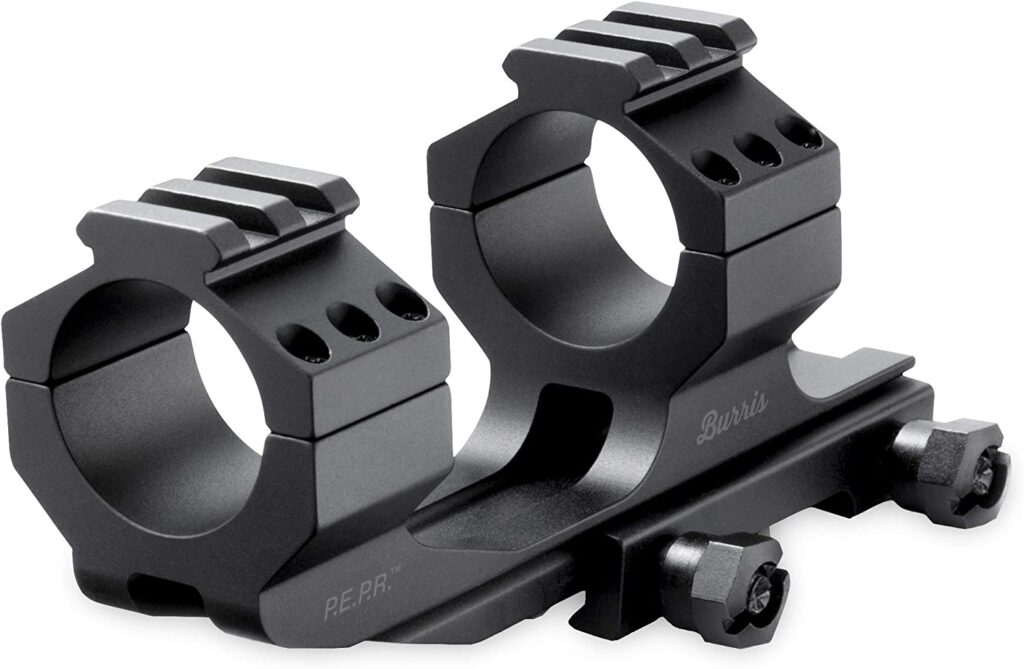
QD (Quick Detach) scope mounts are designed to allow the shooter to quickly and easily remove and reattach their scope or optic to the firearm without the need for any tools. Here are some detailed specifications for QD scope mounts:
- Mounting System: QD scope mounts typically use a lever or button mechanism that allows for quick and easy attachment and detachment from the firearm’s rail. The mechanism should be secure enough to prevent the mount from shifting or moving during use.
- Material: QD scope mounts are typically made from aluminum or steel, which are strong and durable materials that can withstand the recoil forces of the rifle. Some mounts may also feature additional coatings or finishes to improve corrosion resistance.
- Compatibility: QD scope mounts are designed to fit onto a Picatinny or Weaver rail, so it is important to ensure that the mount is compatible with the particular make and model of the firearm. It is also important to ensure that the mount is compatible with the specific scope or optic being used.
- Scope Rings: QD scope mounts may require specific scope rings that are designed to fit the unique contours of the mount. It is important to choose rings that are compatible with the mount and the scope being used.
- Height: QD scope mounts are available in different heights, which can affect the shooter’s ability to use the iron sights or backup optics. It is important to choose a mount that is the appropriate height for the specific firearm and scope being used.
- Weight: QD scope mounts can vary in weight, with some mounts being lightweight and others being heavier. The weight of the mount can affect the overall weight and balance of the firearm, so it is important to choose a mount that is appropriate for the intended use of the firearm.
QD scope mounts are ideal for shooters who need to quickly switch between different optics or who need to remove the scope for transportation or storage. They are also useful for shooters who prefer to use iron sights or backup optics, as the mount can be quickly and easily removed to allow for unobstructed use of the iron sights. However, it is important to ensure that the QD scope mount is properly installed and tightened to prevent any issues with accuracy.
FAQ’S
1. What are the different types of rifle scope mounts?
There are several types of rifle scope mounts, including Weaver, Picatinny, dovetail, and quick-release mounts. Weaver and Picatinny mounts are popular choices and are designed to attach to the rifle’s receiver using a series of crosswise slots. Dovetail mounts are secured by a series of angled grooves cut into the receiver, while quick-release mounts can be easily attached and detached from the rifle.
2. Which type of rifle scope mount is the best?
The best type of rifle scope mount will depend on the individual shooter’s preferences and the intended use of the rifle. Weaver and Picatinny mounts are popular due to their versatility and compatibility with a wide range of rifles and accessories. Dovetail mounts are often used on traditional hunting rifles, while quick-release mounts are a good choice for shooters who frequently need to remove and reattach their scope.
3. How do I choose a rifle scope mount?
When choosing a rifle scope mount, consider factors such as the type of rifle, the intended use of the rifle, and the type of scope being used. Ensure that the mount is compatible with the rifle’s receiver and that it is of high quality to ensure reliability and durability. Additionally, consider the height of the mount to ensure that the scope is at the proper height for comfortable and accurate shooting.
4. What is the difference between Picatinny and Weaver scope mounts?
The main difference between Picatinny and Weaver scope mounts is the width of the crosswise slots. Picatinny mounts have wider slots and are designed to be more standardized and precise than Weaver mounts. This makes Picatinny mounts more compatible with a wider range of accessories and allows for more consistent mounting and repositioning of scopes and other attachments.
5. Can I use a Picatinny scope mount on a Weaver rail?
In most cases, Picatinny scope mounts can be used on a Weaver rail with the use of an adapter. However, the reverse is not always true, as Weaver mounts may not fit properly on a Picatinny rail due to the narrower slots.
6. How do I install a rifle scope mount?
To install a rifle scope mount, first, ensure that the rifle is unloaded and remove any existing scope or mounts. Next, align the mount with the receiver and ensure that it is level and centered. Use the appropriate screws or clamps to secure the mount to the receiver, being careful not to overtighten. Finally, attach the scope to the mount and ensure that it is level and aligned with the rifle’s bore.
7. What height should my rifle scope mount be?
The height of a rifle scope mount will depend on the individual shooter’s preferences and the type of rifle being used. In general, the scope should be mounted as low as possible while still allowing adequate clearance for the rifle’s action and other accessories. The shooter should also consider their preferred shooting position and ensure that the scope is mounted at a comfortable and natural height.
8. Are one-piece or two-piece rifle scope mounts better?
Both one-piece and two-piece rifle scope mounts have their advantages and disadvantages. One-piece mounts are often sturdier and more rigid, providing a solid platform for the scope. Two-piece mounts may allow for more flexibility in mounting and adjusting the scope and can be easier to install and remove. Ultimately, the best choice will depend on the individual shooter’s preferences and the intended use of the rifle.
9. What is the difference between a fixed and a detachable rifle scope mount?
A fixed rifle scope mount is permanently attached to the rifle’s receiver, providing a sturdy and stable platform for the scope. While this can ensure maximum accuracy and consistency, it also limits the shooter’s ability to adjust or remove the scope easily. A detachable rifle scope mount, on the other hand, can be easily attached and removed from the rifle’s receiver, allowing for quick changes and adjustments to the scope’s position. This can be useful for shooters who need to switch between different types of scopes or who require easy access to the rifle’s action for cleaning or maintenance. However, detachable mounts may be less stable than fixed mounts, potentially affecting the accuracy and consistency of the scope’s alignment. Ultimately, the choice between a fixed and detachable mount depends on the shooter’s preferences and intended use of the rifle.
10. Can I use a rifle scope without a mount?
No, it is not possible to use a rifle scope without a mount. A rifle scope is designed to be mounted on a rifle using a specific mounting system that ensures the scope is secure and aligned with the rifle’s bore. Without a mount, the scope would not be able to attach to the rifle, and it would be unstable and ineffective. Attempting to use a rifle scope without a mount could also be dangerous as the scope could potentially fall off the rifle during use. Therefore, it is essential to use a proper mount to ensure the rifle scope functions correctly and safely.
Summary
In conclusion, rifle scope mounts come in a variety of shapes and sizes. There are three main types of mounts: fixed, dovetail, and weaver. The best mount for you depends on the type of rifle you have and the type of scope you want to use.
Be sure to do your research before making a purchase to ensure you get the mount that is best suited for your needs.

